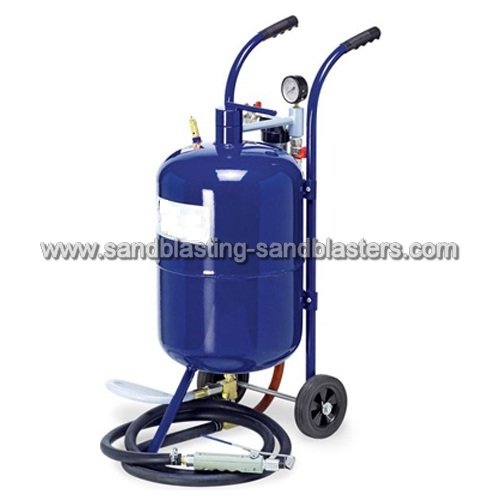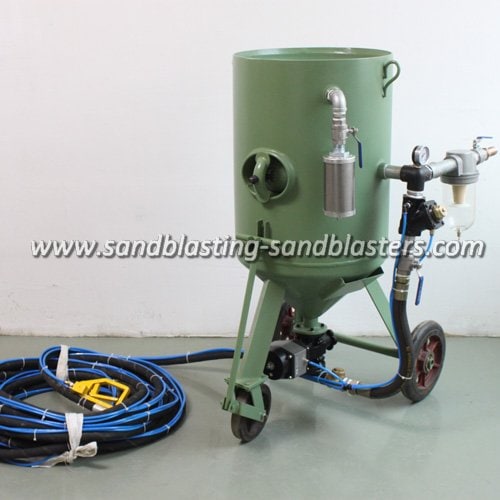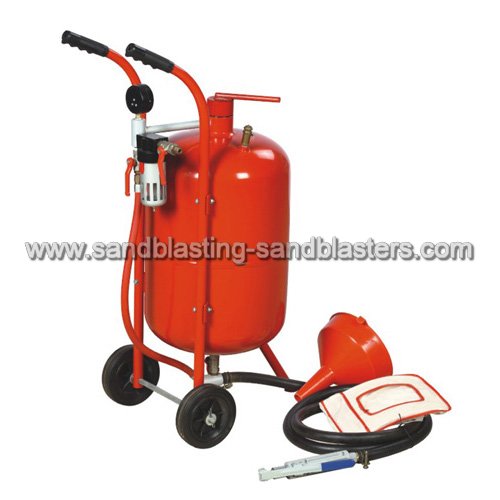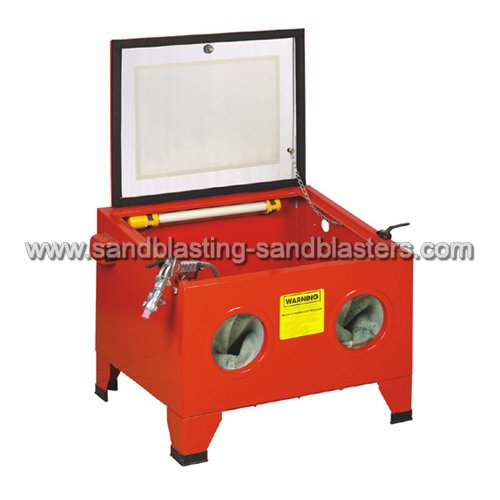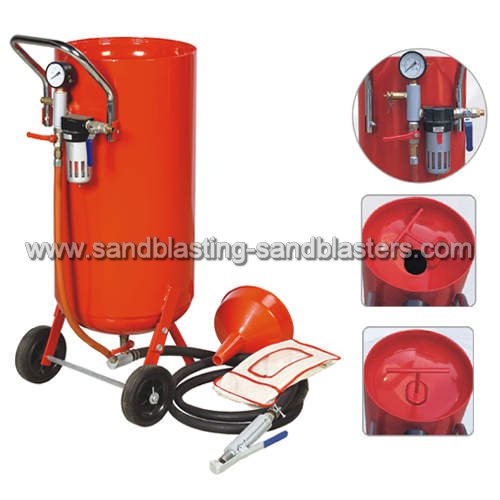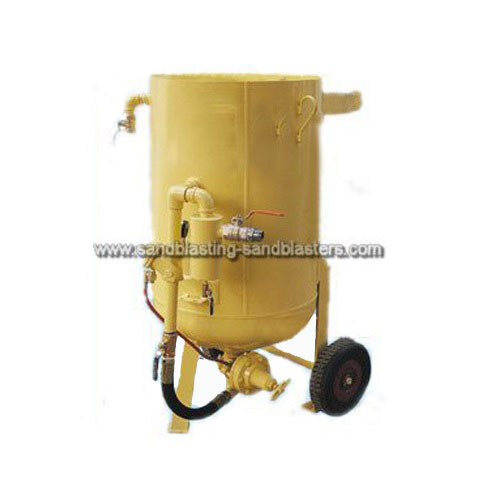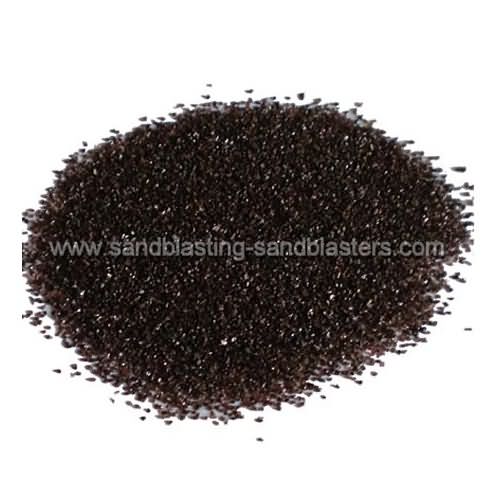What’s the advantage of soda blasting?
Below is the advantage of soda blasting we have summarized for your information.
1. Cleaning & De-Coating in One Step
Standard abrasive blasting is a dirty process, often loading and even embedding the surface with contaminants (grease, oil, tar & abrasive particles) in the process of removing the coating. Recycled abrasives compound this problem by loading increasing amounts of contaminants into the substrate. Pure sodium bicarbonate blast media effectively de-coats and cleans the substrate in one step; producing a level of cleanliness not seen with most processes. The media is not reusable thus eliminating the issue of blasting with re-used media. Coating adhesion relies heavily on surface cleanliness and a surface profile has been used to offset this lack of cleanliness.
2. Unique Cutting Action
Sodium bicarbonate blast media offers the unique properties of sodium bicarbonate, the primary ingredient. The softness (Mohs hardness scale of 2.4) and friable nature of this crystal produces a unique cutting action with little or no effect on most substrates. For example, thick coatings can be removed from glass without any etching effect. With proper care, delicate substrates can be cleaned without damage.
3. No Pre-Cleaning Required
For projects where the coating is covered with grease, carbon, salt or other contaminates, the more traditional methods require the coating to be fully cleaned before blasting. This is required so that the contaminants on the surface of the coating not be driven through the coating and into the surface of the substrate, causing future coating failure.
4. No Need to Re-Profile Steel
Sodium bicarbonate blast media will not profile steel. When an operator removes a coating from a metal surface, he or she exposes the existing anchor pattern under the coating. Unless corrosion has occurred, there is no need to re-profile the surface.
5. Reduced Solid Waste
Pure sodium bicarbonate blast media can be dissolved in fresh water. By dissolving the media and filtering out the contaminates, the solution can generally be discharged to POTW treatment systems or open waterways, with proper discharge permits. Waste volume is generally reduced to less than 5% of the original waste volume. With increasing landfill costs and liabilities, this advantage becomes more important every day.
6. Natural Rust Inhibitor
As long as Baking Soda is on a ferrous metal surface, rust will not form. For rust to form, free moisture and an acidic condition must exist. In most cases, free moisture combines with carbon dioxide in the atmosphere to form carbonic acid. This acid releases a free metal (ferrous) ion, which combines with oxygen (oxidizes) to form rust. Pure sodium bicarbonate blast media buffers the acids, prevents the release of free metal ions and prevents rust.
7. Reduced Clean-Up costs
Large grain or coarse sodium bicarbonate soda blast media performs roughly the same level of work (somewhat slower) as sand blasting while producing 1/5 to 1/7 of the total waste volume. Although media costs per square foot are higher, site clean up and residue disposal are significantly lower. Combine that with the lower consumption rates of the Buster Blaster system. The net balance is that total cost per square foot are about the same for both approaches.
8. Benefits In Waste Disposal
In most non-hazardous applications, the residue from blasting with pure sodium bicarbonate blast media can be rinsed into sanitary drains or sewers, which flush the residue to a water treatment facility, greatly reducing the clean up time. Pure sodium bicarbonate is actually beneficial to waste water treatment systems. For industrial treatment systems, where chemical neutralization is a major cost in water treatment, pure sodium bicarbonate blast media can often save significant dollars in waste treatment.
9. Increased Worker Safety
The safety of sodium bicarbonate to workers is well understood, since it has been in use for some 160 years. The bicarbonate buffer system is the major extracellular buffer for the human body, thus sodium bicarbonate is part of the body's normal chemistry. Pure sodium bicarbonate blast media is not toxic via ingestion, inhalation or dermal contact, nor is it a skin or eye irritant as defined by EPA and OSHA. Any risk to workers is primarily the contaminate or coating removed during the blasting process.
10. Removes Odors
The same odor absorbing effect seen in the refrigerator at home is present when blasting with sodium bicarbonate blast media. It not only removes the contaminates, it also reduces the unfriendly odors. Replaces Dangerous Solvents
Sodium bicarbonate blast media when applied wet is an excellent de-greasing medium that eliminates the use of solvents in most cleaning processes. Sodium bicarbonate blast media does not "dissolve" or "emulsify" grease or oils, it simply coats them causing the grease or oil to release from the surface. It also eliminates the translocation of oil and grease.
11. Does Not Produce Sparks
Sodium bicarbonate blast media will not produce thermal sparks and is suitable for use in explosion proof areas; including refineries, chemical plants and grain elevators as long as proper grounding techniques are used to prevent a static charge build up. Improved Crack Detection When cleaning metal surfaces for crack detection, standard abrasive blasting tends to peen the crack closed or pack the crack with abrasive, making crack detection more difficult. Sodium bicarbonate blast media actually cleans out the crack, leaving it exposed and easy to see.
12. No Residue Problems In Small Passageways
Natrium products soda blast media is 100% pure sodium bicarbonate, additive free and water soluble. It can be used to clean critical engine components including those with small passageways. Once cleaned, the baking soda residue can be thoroughly rinsed off by dissolving in water. Traditional blast material are not water soluble and if left after cleaning, can pack into small passageways and possibly damage an engine while on operation.
13. Reduce Surface Acids
As a strong buffer for acids and alkalis, sodium bicarbonate blast media eliminates acidic conditions on the surface of the substrate. For conditions with high acid levels, acid rain or boiler fly ash, blasting with sodium bicarbonate blast media will reduce coating failures.
14. SSPC – NACE Standards
Natrium Products soda blast media will attain a level of clean that will meet the standards of both NACE and SSPC. NACE 1 (SP-5) White Metal Blast Cleaning NACE 2 (SP-10) Near-White Blast Cleaning NACE 3 (SP-6) Commercial Blast Cleaning NACE 4 (SP-7) Brush-Off Blast Cleaning
15. Hardness Scale
Natrium 260 Blast Media has a hardness of 2.4 on the Mohs' scale of Hardness. The softness of this media means that it can be used to remove most coatings without harming the substrate.
|
Media
|
Hardness, Mohs Scale
|
|
Corundum (natural aluminum oxide)
|
9
|
|
Alumina (synthetic aluminum oxide)
|
9
|
|
Garnet ( Fe3Al2(SiO4)3
|
8
|
|
Steel Shot or Grit
|
8
|
|
Copper Slag or other mineral slag
|
7.5
|
|
Quartz (Silica sand)
|
7
|
|
Glass Bead
|
5.5
|
|
Plastic Bead
|
3.5
|
|
Soda (Sodium bicarbonate)
|
2.5
|
16. Mohs Scale of Abrasives
Hard abrasives seven and above on the Mohs scale (see Above Table ) mostly remain intact and hence, most of the force is directed into the substrate. Softer abrasives such as glass beads and soda crystals shatter on impact and part of the forces are directed in other directions as the particle "explodes" into finer fragments. Some of the fragments travel along the substrate perpendicular to the initial direction of impact. These fragments moving along the surface do a tremendous job of cleaning.
Feng Blast Recommendation:
Tags: FAQ

